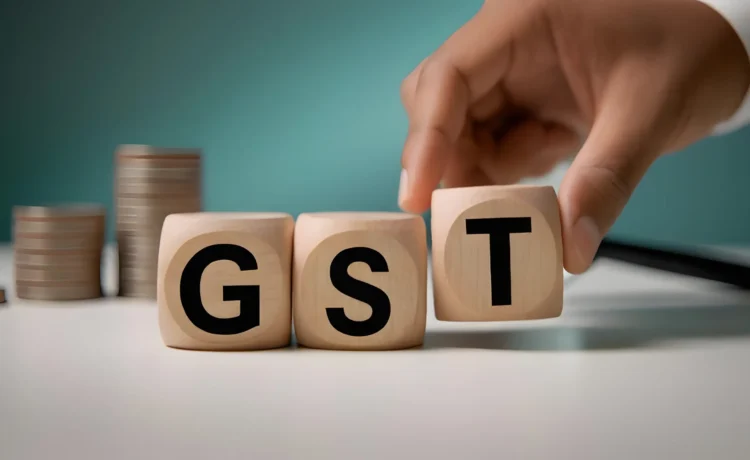In today’s interconnected business environment, goods and services tax (GST) has become more than just a regulatory framework; it is also a rich source of data. From purchasing invoices to filing returns, every transaction leaves a digital footprint. It provides deep insights into business and economic trends. For enterprises, government bodies, and tax professionals, GST analysis is a powerful tool for driving smarter tax decisions, ensuring compliance, and uncovering opportunities for growth.
Role of Data Analysis in Tax Decisions
Data analysis transforms raw GST filings into actionable insights. Businesses deal with large volumes of data through invoices, returns, reconciliations, and audits. Analysing this information allows decision-makers to:
- Identify tax-saving opportunities
- Ensure accurate claims of input tax credit (ITC)
- Detect discrepancies or fraud in GST filings
- Streamline GST compliance with timely filings and accurate reporting
For instance, by analysing GSTR-2B (auto-drafted ITC details) against purchase records, a business can identify mismatched invoices, avoid penalties, and maintain a clean compliance track record. Similarly, government agencies can use aggregated GST data to spot tax evasion patterns and strengthen enforcement.
The role of data analysis here is twofold: helping companies reduce risks while enabling policymakers to refine tax rules based on real-world trends.
Driving Business Growth Through Data-Driven Decisions
GST data isn’t just about compliance; it can be a driver of strategic growth. Businesses that integrate GST advisory with advanced data analytics can make better decisions on pricing, supply chain management, and resource allocation.
Here’s how GST data fuels growth:
- Cost Optimisation: By analysing ITC claims, companies can determine which vendors and regions provide maximum tax efficiency.
- Supply Chain Insights: Transaction-level GST data reveals trade flows across states, helping businesses design cost-effective distribution networks.
- Customer Behaviour: Analysing GST sales data can highlight demand trends across geographies, enabling targeted marketing and expansion strategies.
- Financial Planning: With accurate forecasting of tax liabilities, businesses can improve cash flow and working capital management.
A manufacturing company, for example, might use GST data to decide whether to set up a new plant in a particular state based on tax incentives and supply chain savings. By going beyond compliance, businesses can use GST analysis as a competitive advantage.
Macroeconomic Insights from GST Data
Beyond individual businesses, GST data provides valuable insights at the national and state levels. Since goods and services tax captures almost every transaction in the formal economy, it acts as a real-time barometer of economic activity.
- Sectoral Trends: GST collections reveal which industries are performing well and which are lagging. For instance, rising GST collections in the auto sector may indicate increased consumer demand.
- Regional Growth Patterns: State-wise GST data highlights economic hotspots and helps governments plan infrastructure or incentives accordingly.
- Policy Making: GST trends assist policymakers in assessing the impact of tax rate changes or exemptions on revenue collections.
- Monitoring Informal Economy Integration: Higher GST registrations over time indicate that more small businesses are entering the formal tax net.
This kind of macroeconomic intelligence is invaluable for both policymakers and businesses. While the government uses it to refine tax slabs and compliance frameworks, businesses can align their strategies with broader market realities.
Technological Advancements in GST Data
The growing complexity of GST filings has led to technological innovation in tax data analysis. Tools powered by automation, machine learning, and artificial intelligence are transforming how companies and tax professionals approach GST.
- Automated Reconciliation: AI tools now match invoices between GSTR-2B and purchase registers seamlessly, reducing errors and saving time.
- Predictive Analytics: Machine learning algorithms can forecast tax liabilities and detect unusual patterns in GST returns that might signal fraud.
- Dashboards & Visualisation: Modern software turns complex GST numbers into easy-to-read charts, enabling managers to track compliance health in real time.
- Cloud-Based Compliance Management: Cloud platforms centralise tax records across multiple locations, simplifying GST compliance for large organisations.
Professional GST advisory services are increasingly integrating these technologies, offering businesses smarter solutions to stay compliant while gaining data-driven insights.
Challenges in GST Data Analysis
While the benefits are clear, businesses often face hurdles in effectively using GST data for decision-making. Key challenges include:
- Data Quality Issues: Errors in invoices, mismatches in filings, or incomplete records can distort analysis.
- Constant Regulatory Changes: Frequent updates in GST rules mean businesses need to adapt their data processes regularly.
- Integration with Legacy Systems: Many companies still use outdated accounting systems that do not sync seamlessly with GST portals.
- Data Security Concerns: With sensitive financial and customer data involved, businesses must ensure compliance with data protection norms.
- Lack of Skilled Professionals: Analysing GST data requires expertise in both taxation and analytics, a combination not always easy to find.
Overcoming these challenges often requires investing in advanced tools or outsourcing to specialised GST advisory firms that provide comprehensive compliance and data analysis support.
Conclusion
GST analysis has moved far beyond being a mere compliance requirement. It is now a strategic tool for businesses and governments alike. By leveraging GST data effectively, organisations can reduce tax risks, enhance efficiency, and unlock new growth opportunities. At a macro level, GST collections provide policymakers with real-time insights into economic health, guiding smarter governance.
For businesses, combining robust data practices with professional GST advisory ensures that they don’t just meet regulatory obligations but also use tax intelligence as a driver of growth. As technology evolves and compliance norms tighten, those who embrace data-driven strategies will be best positioned to thrive in India’s dynamic goods and services tax environment.











